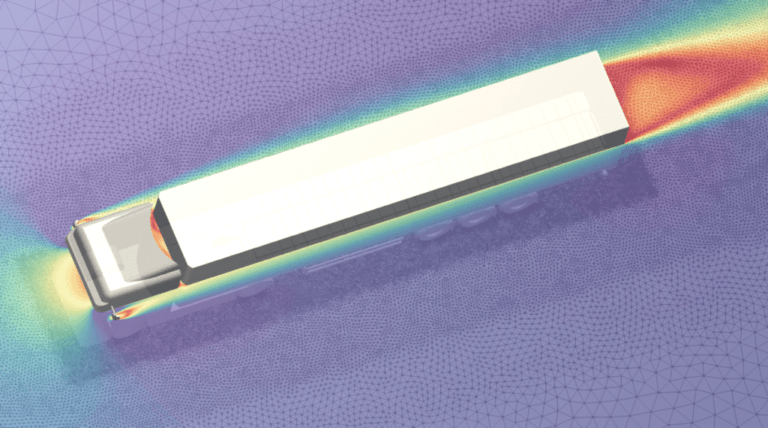The transport industry faces increasing energy costs as a barrier for competitiveness. Improving the aerodynamic drag of a vehicle is a clear path for reduced energy consumption, resulting in cheaper and cleaner transport, be it for people or cargo, rail or road.
In order to study the external aerodynamics of a vehicle, CFD modelling is the best complement to wind tunnel analysis during the design phase. Aerodynamic coefficients can be obtained for different geometry alternatives much sooner than on real testing, providing also very valuable flow insights on the vortex and turbulence that influence the final aerodynamic performance.
Cross wind can also be a factor for safety reasons, as the aerodynamic behaviour of a vehicle can determine its resistance against rollover.

SDEA_Engineering Solutions engineering team has experience in aerodynamic studies with standards such as EN 14067 for railway applications, including assessment for EN-14067 – Part 6 which applies to crosswind conditions, where the aerodynamic force moment is coupled with the moments of sprung and unsprung masses in order to check the possibility of wheel unloading.
Aerodynamic studies are not only used to mitigate the wind’s negative effects in vehicles with high lateral surface areas, but also used for safety in racing applications such as NASCAR roof flaps which prevent rollover in high speed accidents.
Aerodynamic forces can play a vital role in many other engineering applications, i.e. wind power industry facing new challenges to offer innovative designs, which are supported by the use of computational fluid dynamics.
SDEA_Engineering Solutions collaborates actively in the design stage of rotor blades to get the optimal throughput for every environmental condition.

